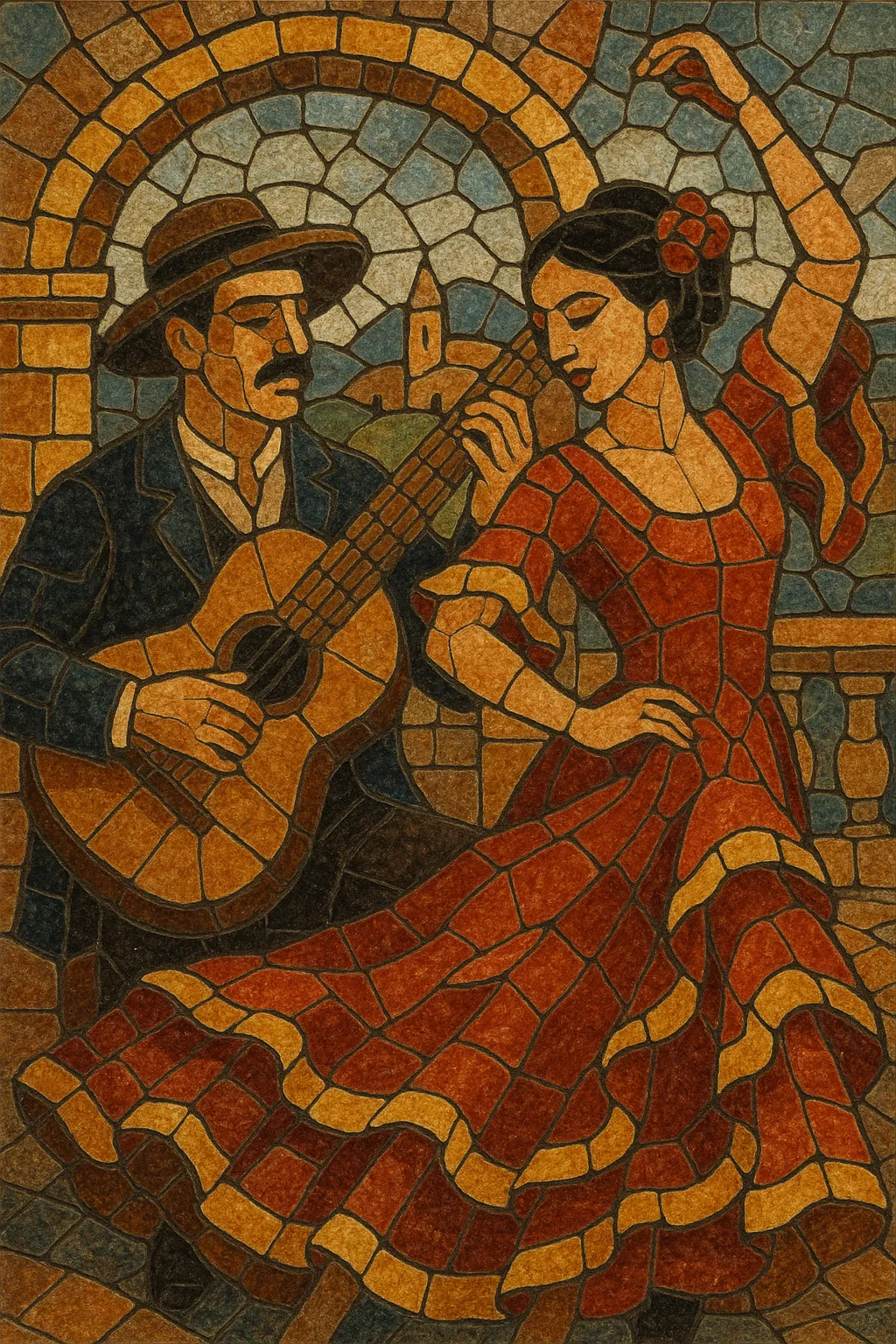Género grande is the full-length form of Spanish zarzuela: a three-act musical theatre genre that blends operatic numbers (arias, romanzas, ensembles, and choruses) with spoken dialogue. It employs Romantic-era orchestration while drawing on Iberian folk idioms and dance rhythms.
Unlike the one-act, lighter género chico, género grande favors broader narratives, historical or costumbrista (slice‑of‑life) subjects, and a more symphonic musical scale. Its scores feature lyrical romanzas for principal voices, vivid choral writing, extended finales, and danced interludes rooted in Spanish tradition (seguidillas, fandangos, boleros).
Género grande crystallized in Spain during the Romantic era, when composers and librettists sought a national musical theatre distinct from Italian opera. Building on the earlier Baroque zarzuela tradition (zarzuela barroca) and popular stage genres like the tonadilla, creators expanded the scale to three acts, adopted richer orchestration, and embraced spoken dialogue alongside operatic numbers.
Composers such as Francisco Asenjo Barbieri helped codify the model, marrying sophisticated symphonic writing with vernacular melodies and dances to depict Spanish history, manners, and urban life.
From the 1860s through the 1890s, género grande thrived in Madrid’s theatres. While the brisk, inexpensive género chico boomed in the same period, the three‑act zarzuela held prestige for its dramatic breadth and musical ambition. Works emphasized romanzas, energetic choruses, and finales built on folk‑dance rhythms (seguidillas, fandangos, boleros), all framed by spoken scenes that propelled plot and humor.
In the early 1900s–1930s, composers like Amadeo Vives, José Serrano, and Pablo Sorozábal refreshed the genre with lush harmonies and vivid orchestration. Although changing tastes and historical upheavals reduced new production after the 1930s, género grande remained central to Spanish musical life through revivals, recordings, and continued performances—especially at institutions like the Teatro de la Zarzuela in Madrid. Its fusion of operatic craft and national idiom has continued to shape Spanish-language musical theatre and popular operatic repertoire.


